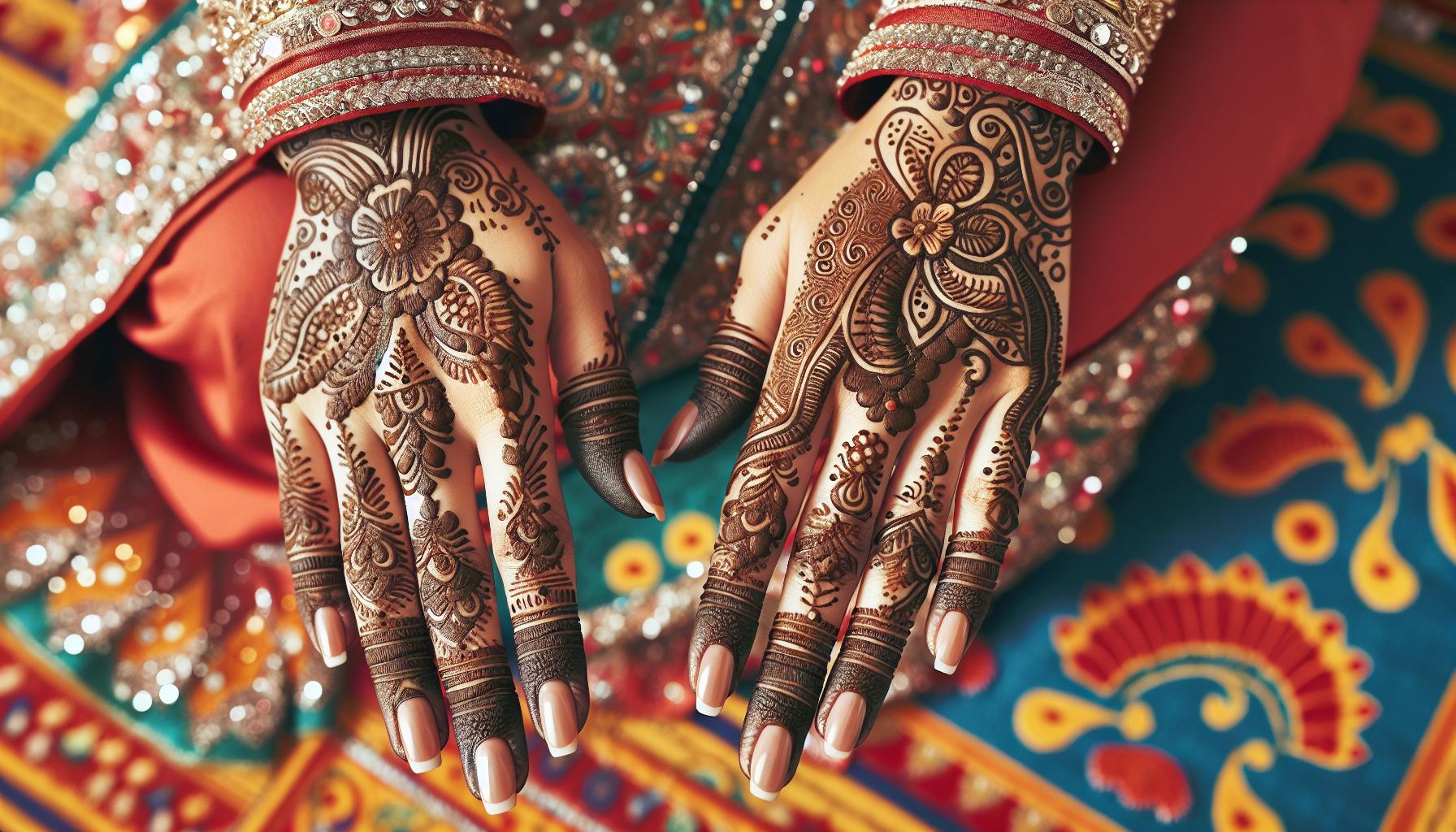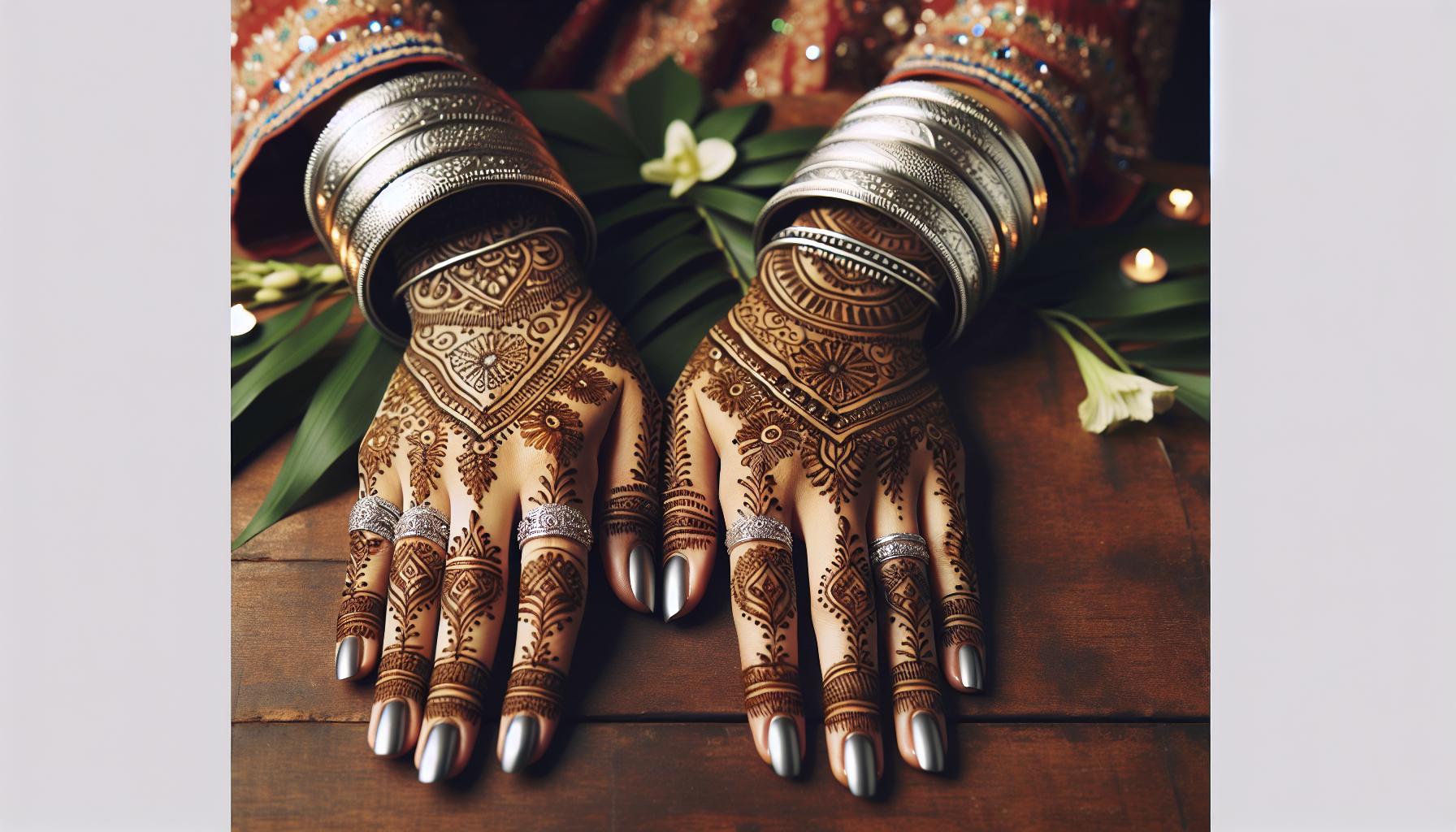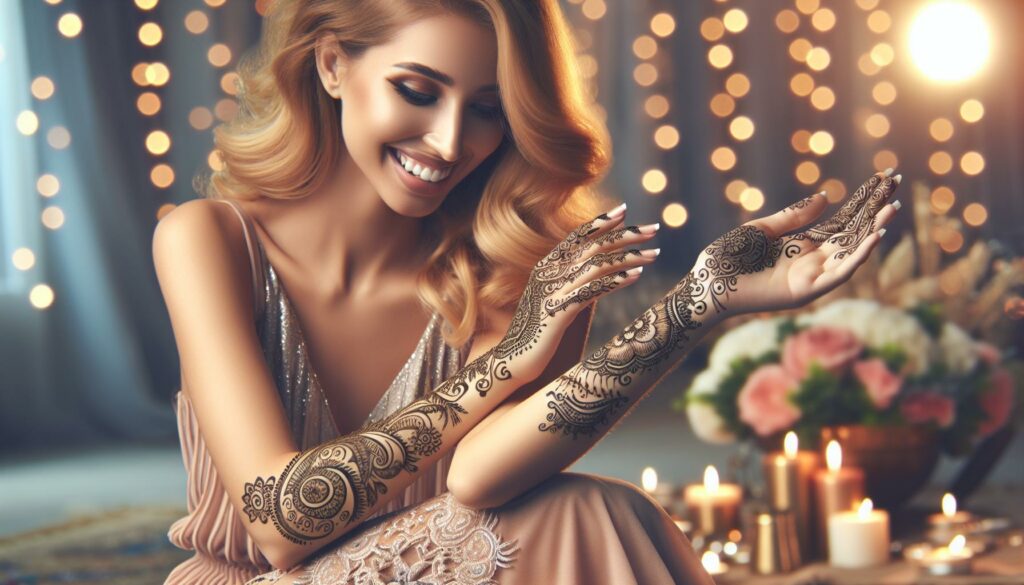Mehendi designs have a unique charm that captures the essence of celebration and tradition. When it comes to the back side:li0z_oz1cl0= mehendi design, it’s all about intricate patterns that tell a story. I’ve always been fascinated by how these designs transform hands into stunning works of art, especially when applied on the back of the palms where creativity knows no bounds.
In this article, I’ll explore the mesmerizing world of back side mehendi designs. From floral motifs to geometric shapes, each design has its own flair and significance. Whether you’re preparing for a wedding or just want to adorn your hands for a special occasion, these designs can elevate your look and add a personal touch. Let’s dive into the beauty and artistry of mehendi that continues to enchant generations.
Key Takeaways
- Embrace Tradition and Modernity: Back side mehendi designs beautifully blend traditional artistry with contemporary styles, showcasing intricate patterns and modern geometric elements.
- Floral and Geometric Motifs: Floral designs symbolize beauty and fertility, while geometric patterns offer a stylish, minimalistic twist, catering to diverse aesthetic preferences.
- Personalization Matters: Customization has gained popularity, allowing individuals to incorporate personal symbols or initials into their mehendi designs for a unique touch.
- Application Tips for Longevity: Use quality henna, thin layers, and proper skin preparation to achieve vibrant, long-lasting mehendi designs, while avoiding harsh chemicals post-application.
- Cultural Significance: Mehendi represents joy, prosperity, and emotional expression, making it an essential part of celebrations, particularly during weddings and festivals.
- Artistic Appreciation: The detailed craftsmanship of mehendi fosters an appreciation for cultural expressions, connecting generations through this unique form of artistry.
Back Side:li0z_oz1cl0= Mehendi Design
Current back side:li0z_oz1cl0= mehendi design trends showcase a blend of traditional elements with contemporary influences. Popular styles include intricate floral motifs, bold geometric shapes, and intricate paisley patterns. Each trend offers unique aesthetic appeal and cultural significance.
- Floral Motifs: Floral designs dominate mehendi trends, representing beauty and fertility. Roses, lotus flowers, and vines create stunning patterns that enhance the back of the hands.
- Geometric Shapes: Geometric patterns provide a modern twist to traditional mehendi. Lines, triangles, and hexagons create chic designs, appealing to minimalist preferences.
- Bridal Mehendi: Bridal mehendi remains a focal point, emphasizing complexity and artistry. Usually featuring elaborate patterns covering the arms and legs, these designs symbolize joy and celebration.
- Arabic Style: Arabic mehendi emphasizes bold lines and open spaces. It often incorporates larger motifs, giving a distinct look that contrasts with more intricate designs.
- Customization: Personalized designs have gained popularity in recent years. Couples often choose symbols or initials that hold special meaning, making their mehendi uniquely theirs.
Staying informed on evolving styles keeps the artistry of mehendi relevant, blending heritage with modern aesthetics.
Detailed Analysis of Back Side:li0z_oz1cl0= Mehendi Design

The back side:li0z_oz1cl0= mehendi design showcases remarkable intricacy and aesthetic appeal. Each element contributes to the overall beauty, making it a popular choice for special occasions.
Key Features of the Design
- Intricate Patterns: The design features fine lines and detailed motifs, creating a stunning visual impact.
- Floral Elements: Flowers dominate the design, symbolizing beauty and freshness, adding life to the overall look.
- Geometric Shapes: Strategic use of geometric patterns enhances symmetry and modernity, appealing to contemporary tastes.
- Bold Accents: Larger motifs combined with intricate detailing provide a balance between simplicity and complexity.
- Personalization: Custom symbols or initials incorporated into the design allow for a unique touch that reflects individual stories.
- Celebration of Joy: Mehendi designs represent happiness and are essential during celebrations, particularly weddings and festivals.
- Fertility and Prosperity: Floral motifs signify fertility and prosperity, aligning with the blessings sought in marital unions.
- Cultural Heritage: The art of mehendi has historical roots, connecting generations through shared traditions and artistry.
- Emotional Expression: Personalized designs convey individual sentiments, making each application a unique narrative.
- Aesthetic Appreciation: The intricate craftsmanship of mehendi fosters a deep appreciation for the artistry within cultural expressions.
Comparison with Other Mehendi Designs

Mehendi designs vary greatly, showcasing distinct styles, techniques, and cultural influences. I’ll explore the contrasts between traditional and modern approaches in mehendi artistry.
Traditional vs. Modern Approaches
Traditional mehendi focuses on intricate, detailed designs often rich in cultural symbolism. These patterns typically include floral motifs, paisley shapes, and regional elements that tell stories of heritage. Celebrated during festivals and weddings, traditional mehendi captures the essence of cultural practices.
Conversely, modern back side:li0z_oz1cl0= mehendi design embraces simplicity and minimalism. Artists often experiment with bold geometric shapes and abstract designs. This approach encourages personalization, allowing individuals to incorporate unique symbols or initials that resonate personally. While maintaining beauty, modern mehendi seeks to adapt to contemporary styles, making it versatile for various occasions.
Mehendi designs consistently blend traditional artistry with modern sensibilities, creating a dynamic interplay between the past and the present. Each approach, traditional and modern, contributes to the multifaceted nature of mehendi, enriching the cultural tapestry surrounding this exquisite art form.
Tips for Application and Maintenance

Applying and maintaining back side:li0z_oz1cl0= mehendi design designs requires attention to detail for the best results. Follow these practical tips to ensure vibrant and long-lasting outcomes:
- Choose Quality Henna: Opt for fresh, natural henna powder. Check for organic brands to avoid harmful additives that can affect color.
- Prepare the Skin: Clean and exfoliate hands before application. Removing oils and dead skin helps the henna stain penetrate better.
- Apply Thin Layers: For the best color, apply henna in thin, even layers. Thicker layers can lead to smudging and uneven staining.
- Use a Cone for Precision: Employ a henna cone for intricate designs. This tool allows for finer lines and more detailed patterns.
- Let It Dry Completely: Allow henna to dry naturally and completely. Avoid touching it during this time to prevent smudging.
- Seal the Design: After drying, seal the mehendi with lemon-sugar mix to enhance the stain. This mixture adds shine and helps darken the design.
- Avoid Water: Keep the area dry for at least 6-8 hours post-application. Water exposure can dilute the stain and affect color intensity.
- Remove Carefully: Peel off dried henna gently instead of washing it off. This method protects the stain when removing the paste.
- Moisturize Post-Application: After removing henna, keep the skin moisturized. Use natural oils, like coconut or olive oil, to prolong the life of the stain.
- Avoid Chemicals: Steer clear from soaps, lotions, or scrubs that contain harsh chemicals. Chemical exposure can fade henna quickly.
- Sun Exposure: Limit sun exposure during the first 24 hours. Longer exposure helps deepen the henna color, but it’s best to avoid direct sunlight initially.
- Understand Color Fade: Expect the henna to darken within the first 24-48 hours, and then gradually fade over the next week. Regular moisturizing helps maintain the tint longer.
By following these tips, I can enhance my mehendi’s beauty while ensuring it remains a stunning expression of art for days.
The Beauty Of Mehendi Designs
Embracing the beauty of mehendi designs on the back of the hands is a celebration of artistry and tradition. Each intricate pattern tells a story and adds a unique touch to special occasions. I find that the blend of traditional and modern styles keeps this art form alive and relevant, allowing for personal expression through customization.
The joy of mehendi lies not just in its visual appeal but in the cultural connections it fosters. As I continue to explore evolving trends and techniques, I appreciate the craftsmanship that goes into each design. Whether for a wedding or a festive celebration, mehendi remains a cherished expression of beauty and heritage.

